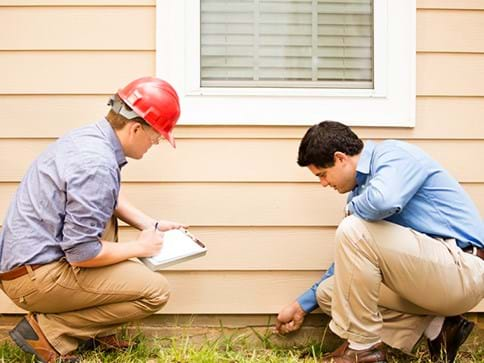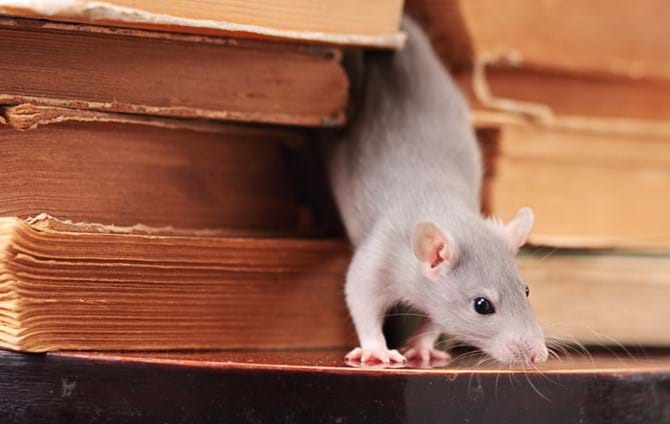You’ve extensively searched far and wide, found the perfect house and have even visited to ‘kick the tyres’. And while there are no visible signs of any pests or damage, you’ve hired a professional property inspector to give the building the once over, just to be sure.
But how long does a building and pest take? Do you need to be present and crawl into the roof space with the inspector? Our FAQ will help to answer these questions and more.
How long does a building and pest inspection take?
The average time for a building and pest inspection is between 1.5 and two hours. However, this can vary depending on the property’s size, condition, structure, age and their pest infestation’s severity. Naturally, a house in good condition with no signs of pests will take less time to inspect than an older property with termites.
It also depends on the house’s features. For example, a house built on a concrete slab will have a different inspection process to one with a crawl space. A crawl space foundation will need to be checked for pests, water damage and other defects, while a concrete slab will require a moisture metre reading and analysis. Either way, you should expect a thorough and accurate job and a comprehensive building inspection report from your chosen company.
Why bother with building and pest inspection at all?
Any seller who is looking to offload their property wants to ensure it’s being shown in the best light possible. However, it’s not unusual for a perfectly normal looking home to be harbouring all sorts of pests and defects, from wood eating termites to major structural damage.
A building and pest inspection uncovers any potential problems that could scupper a sale further down the line. It’s then delivered in a building report, highlighting minor and major that needs addressing. The report then gives you some bargaining power when it comes to negotiating the property’s price, as the seller will need to factor in the cost of any repairs.
What’s included in a building and pest inspection?
As both the name and function suggests, a building and pest inspection covers, well, both the building and pests. The inspector will check for any visual signs of damage, both inside and its external surrounding areas.
Exterior areas may include the roof, guttering, eaves and downpipes, nearby trees and other landscaping, as well as the condition of any external walls. Meanwhile, the interior will cover all accessible areas including the attic (if there is one). They’ll also scan for any pests, droppings or other tell-tale signs of an infestation.
Building inspections will typically involve:
- Electrical wiring and safety
- Plumbing Roof condition and guttering
- Doors, windows, skirting boards and flooring
- Structural stability
- Moisture levels
- If the property has a crawl space, the inspector will need access to this area
- Poor workmanship and materials that don’t meet building code
Pest inspections will look for:
- Rotting wood Holes or damage to eaves, walls and floors
- Droppings Nests
- Chewed wires
- Stains on ceilings
- Bad odours i.e. a musky smell
- Tunnels in the wood
While both can be performed as standalone inspections, we recommend having both carried out at the same time for a more comprehensive property overview. This ensures you’re not blindsided by any nasty surprises down the line.
How do I prepare for a building and pest infestation?
Once you’ve done your due diligence and found a reputable building inspector, how exactly do you prepare for the inspection? Here’s a quick rundown on things you can do to make sure the process goes smoothly.
Prepare a list of questions – While a building inspector will already have a checklist of items they need to cover, it helps to have a list of your own questions. This ensures you won’t forget anything and that all your concerns are addressed.
Highlight your concerns – If you have some prior knowledge about the property or area, feel free to mention these to your inspector. For example, if you’re aware of a pest problem nearby or know heavy rainfall is a common occurrence, feel free to bring this up.
Ask your real estate agent for more info – Unless your interested property is newly built, it will have a comprehensive file of historical data. This may include former renovation or extension work as well as any previous major repairs and safety hazards.
Do I need to be present for the inspection?
While it’s not mandatory, we recommend that you be present during the inspection.
Just remember that a building and pest inspector will thoroughly inspect all property areas of the property. This means getting up close to roof guttering and climbing into any available crawl spaces – not exactly where you want to spend your Saturday afternoon.
It’s also vital to give them the space and time they need to do their job. If possible, try to intrude and leave them to it.
When will I receive my building and pest report?
Your final report should arrive shortly after your licensed building inspector has completed their inspection. In most cases, you’ll receive it within 24 hours or 3-4 hours after the inspection.
We know that time is of the essence when it comes to property, so we’ll make sure to get the ball rolling asap.
When should I conduct a building and pest inspection?
Ideally, you should conduct a building and pest inspection before purchasing a property. Alternatively, you can include an inspection as a condition of your offer, which should state:
- The party conducting the building and pest inspection – buyer or seller?
- Date or time frame of the inspection
- What you’re inspector is looking for i.e structural defects vs. pests
- Actions that will be taken if any issues arise e.g. renegotiation of price, walk away from the deal or agreed cost of repairs
Making your condition contingent on a building and pest inspection is a smart way to protect your interests and ensure you’re not buying a lemon. It’s also important to keep it as clear as possible so that there’s no ambiguity about what needs to be done.
Is there a fail or pass in a building and pest inspection?
There’s no pass or fail in a building and pest inspection. However, the report will detail any minor and major issues that are found with the property.
For example, if there’s evidence of poor craftsmanship i.e. unhinged doors or windows, this will be included in the report. The same goes for any structural defects or damage, as well as any pest problems that are found.
An inspection isn’t done to judge the property’s quality, but rather to provide a clear overview of its condition. From here, it’s up to you to decide what course of action to take.
What if the building and pest inspection comes back clear?
If the inspection comes back clear, then it’s good news! It’s actually refreshing for a seller to make sure their property is up to scratch and that there are no nasty surprises.
This shows that they’re being upfront about any potential issues and that they’re confident in the property’s condition. In other words, it’s a good sign that they’re serious about selling. Most importantly, it lets you purchase a home that complies with Australia’s building standards.
Do newly built houses have defects?
There’s a wide misconception that newly built houses are perfect and free of any defects. This is due to the lack of wear and tear associated with older properties and that they’re built to today’s building standards.
However, it’s important to remember that every house – new or old – is built by humans. And as we know, whether it’s intentional or unplanned, people make mistakes. From using substandard materials to cutting corners when installing fixtures, there are a number of ways defects can slip through the cracks.
And while new buildings must pass a final inspection by the local council or state authority before they can be occupied, this doesn’t mean that they’re perfect. Problems such as poor materials are typically not considered during these inspections as they don’t pose an immediate safety hazard.
It’s only when residents start moving in and living their day-to-day lives that these issues become problems. Poor materials simply rot, warp or crumble over time, while bad workmanship leads to things like gaps in doorways and windows, or cracks in the walls.
So regardless if it’s a new build or an oldie but a goodie, it’s always worthwhile and wise to get a service that covers building and pest inspections before signing the dotted line.
What is the importance of thermal imaging?
Thermal imaging uses tech to create an image of the property based on heat signatures. This helps to identify potential defects that might not be visible to the naked eye, calculating surface temperature and displaying it as a coloured image.
For example, a poorly insulated home that’s letting excessive amounts of heat escape can be easily spotted using thermal imaging. It’s also typically used in a termite inspection as your floors and wall’s heat patterns can indicate their presence.
All good building inspectors will provide thermal imaging as part of their service. However, it should be used as part of a broader inspection, not as a standalone tool.
Book An Inspection with Sidepost Today to Get Started
Looking to book a building and pest inspection? Sidepost offers a comprehensive service that includes termite inspections, building inspections or both. We’ll make sure you’re fully aware of the condition of the property before you purchase, so that you can make an informed decision. We provide building and pest inspection in Hobart, Perth, Sydney, Brisbane, Canberra, Gold Coast, and many other cities.
Contact us today at 1300 138 499 or book and pre purchase inspection online. We’ll connect you with our qualified and experienced inspectors who service all of Australia.
Air Conditioning ( 3 )
Blinds installation ( 3 )
Building and Pest Inspections ( 4 )
Car Detailing & Car Wash ( 3 )
Carpet Cleaning ( 3 )
Carpet Installation ( 2 )
Custom Fish Tanks ( 2 )
Dry cleaning and ironing ( 3 )
Fencing Contractors ( 5 )
House Cleaning ( 7 )
House Painting ( 6 )
Ironing Service ( 1 )
Lawn Mowing ( 3 )
Pest control ( 2 )
Pool cleaning/servicing ( 3 )
Pressure Washing ( 2 )
Uncategorized ( 6 )
Professional Home Services at your Door
Get it all done with Sidepost - House cleaning, fencing, painting, and more.


